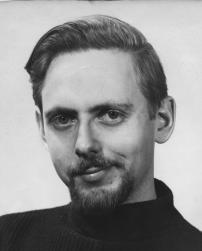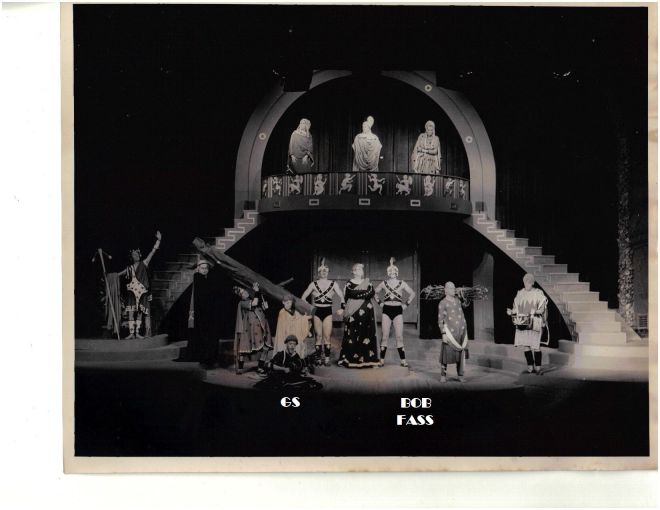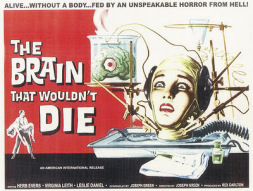Show Business was the major source of casting information, where producers posted notices about the shows they were casting, the kinds of roles available, the requirements for singing or dancing, which usually were separate, when the shows were scheduled to open, where the auditions would be, and where to send pictures and résumés. Most actors relied on Show Business. Especially those of us who didn’t have agents.
How to get an agent? The standard way was to get a role in which agents might come see you perform. Naturally, if an agent thinks you might get regular work, there’s profit in it for the agent. So to get a job, get an agent; to get an agent, get a job. Simple!
Minimally, directors and producers wanted those “pics and résumés” mailed to them, unless there were open calls, or phone numbers where we could contact the people casting and try to set up interviews, or, if really in luck, auditions.
Show Business made its profit from such listings. But it also had plenty of ads for acting coaches, singing coaches, résumé coaches, and photographers who specialized in the standard format 8 x 10 glossy pictures.

I had pictures made. It meant setting up a session with a professional photographer, with all kinds of poses and wardrobes from which to choose the best face that looked like me but also looked special and distinctive. Not cheap.
As for a résumé, having created a few when I had been hopping from station to station, I thought I knew how to do that. There was a problem, though: no New York acting credits. So I listed roles I had played at Temple, without specifying where. And listed only three radio stations.
I had to pay for at least a hundred copies of the picture and of the résumé, straining Vene’s and my budget.
We decided to sell our Fiat. That made sense. What’s the point of young people with small incomes trying to maintain a car in Manhattan? It hadn’t been all that useful in those first few months, except to get to New Rochelle. And then, during our first winter in New York, I’d spent a lot of energy and time moving the car every other weekday to stay within alternate-side-of-the street legalities. “Mon. Wed. Fri. No parking 8 a.m. to 5 p.m.” or the same, instead, for Tue. and Thu.
I had been able to collect a small amount of unemployment insurance from New Jersey those first few months. I qualified because I could claim that I had to leave my job at WOND to be with my wife when we moved to New York so she could take a job there. And my tiny stint at WNRC proved that I had been looking for work.
During that winter and even into early April, I landed five acting roles. All minor. Two were off-off-Broadway, on West 71st Street in a church basement where actor/producer Sumner Kernan regularly produced plays for Players West and where he starred in George Bernard Shaw’s Captain Brassbound’s Conversion. He played the Captain. I played a Scot, Leslie Rankin, replacing John Lovelady who’d moved on to something bigger. My skill at accents and my résumé credits (albeit college) made me look like a good choice. Perhaps my beard did, too.
This was also my introduction to theatre in the round. I wasn’t used to being that close to audiences; proscenium stages had always kept us comfortably separated. It also meant that sometimes I had to step over audience feet.
Likewise this was my introduction to real New York theatre people. An older chap, Anton Spaeth, was among them. He seemed so elegant and sophisticated. Backstage, he and the rest of the cast joked about other actors and about directors. They seemed to know so much about things I didn’t understand, as if they were some kind of exclusive club. But once, alone with Adrienne Leigh, she told me “confidentially” that she thought I was much better in the role than John Lovelady had been. She said that he had played Rankin as silly, whereas I gave him believable seriousness which made the character much funnier. I was flattered.
Then, given my radio-skilled speaking voice, I landed another part there at Players West, Narrator in Edmond Rostand’s The Woman of Samaria, translated, of course.
Although I invited agents, none came. And I hadn’t learned how to network with other actors.

Still the character actor, I also personified an elderly man in a group of other old guys in Aristophanes’ Lysistrata starring Meg Mundy. We had a few lines, but we were basically an ensemble without specific roles. But that was real off-Broadway. Producer Day Tuttle directed it in his new playing space, the East 74th Street Theater, converted from a Czech social club clubhouse.
During rehearsals, Mundy spoke up in front of all of us asking Day for guidance in how to play the role; she was having trouble figuring it out. “I don’t believe in telling actors what to do,” he replied sweetly.
Later, another actor would tell me that that statement most likely meant that Day didn’t know what to do.
The show closed in one week. All the big newspapers covered it and their reviews said it had no style, no point of view. That seemed valid. The playing space, however, got praise, perhaps Tuttle’s principal goal.
Next, tiny Blanche Marvin, who ran Merrimimes, a children’s theatre group at the lower East Side’s Cricket Theatre, saw possibilities in me to play the father in a seasonal attraction, Meet Mr. Easter Bunny. My mature sounding voice and my face gave me the kind of somber sound and look to play Father, one of those initially mean dads so common in children’s plays and stories, who would, of course, come around to be a nice guy after all.
I was the cause of a near-disaster during the run. I got tied up in a major traffic jam on the way to the theater and arrived much later than I should have. By the time I got there, the play was already underway. That wasn’t so bad in itself, since Father didn’t come on until the very end of the first act. But, while I was in the dressing room backstage still putting on my costume and make-up, I could hear the cast going through some of the act’s final dialogue.
That act was supposed to come to a dramatic conclusion, as Father walked in on his kids hanging out with a six-foot-tall, goofy rabbit who, unlike Mary Chase’s Harvey, was entirely visible.
The final words had been reached. I harshly yelled out from backstage, putting on my shoes, “Children! What’s going on in there?”
The cast ad-libbed some simple stuff in response.
I tied my shoes and buckled my belt. “Children! What are you doing?”
More ad-libs out front.
Finally I strode in. Curtain.
Years later I still have a few residual nightmares about arriving on stage late.

Film extra work finally came: once again as part of a group of guys. This time in a sleazy situation, as members of a “photo club” who were really there to stare at nearly nude women in the low budget horror feature, The Head That Wouldn’t Die (later known as The Brain That Wouldn’t Die). One girl got totally nude for the “European version.” A bonus for all of us who could concentrate. When the film emerged several years later, my head was no longer to be seen, nor any of the rest of me. Editing.
By then I had joined AFTRA, the television and radio performer’s union, and had certainly been getting paid; I was a professional actor, at last. And, like so many, barely employed.
Oh, and CBS Radio still had a few dramas. I auditioned using my own choice of material to show off my range of voices and accents. Director Himan Brown then asked me why I hadn’t better displayed my own voice. Every one in the business could do voices and accents, he explained.
Radio. There it was again. Maybe that’s where I still belonged, even if not as an actor. But in New York? It didn’t seem possible. But it happened.